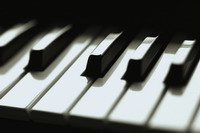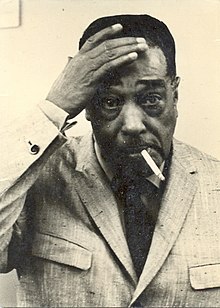Piano Sheets > Duke Ellington Sheet Music > C Jam Blues (ver. 2) Piano Sheet
C Jam Blues (ver. 2) by Duke Ellington - Piano Sheets and Free Sheet Music

About the Song
Other avaliable versions of this music sheet: Version 1 Version 2
"C Jam Blues" is a jazz standard composed in 1942 by Duke Ellington and performed by countless other musicians, such as Dave Grusin and Django Reinhardt. The melody likely originated from Barney Bigard, a clarinetist in Duke's Orchestra, in 1941, but its origin is not perfectly clear.[1] Edward Kennedy -Duke- Ellington (April 29; 1899 May 24; 1974) was an American composer; pianist; and bandleader. Recognized during his life as one of the most influential figures in jazz; if not in all American music; Ellington-s reputation has increased since his death; including a special award citation from the Pulitzer Prize Board.One of the twentieth century-s best-known African-American celebrities; Ellington recorded for many American record companies; and appeared in several films. Ellington and his orchestra toured the United States and Europe regularly before and after World War II. Ellington led his.
Download this sheet!
About the Artist

Random article
How to search for the best free sheet music on the internet If you would love to learn how to play the piano but do not have the funds to afford expensive lessons then sheet music can help you. There are plenty of websites online, which provide you with free sheet music. You can play classic compositions using such sheet music free piano.
Different styles
You can search online to find free sheet music for piano. There are sites, which provide many different kinds of genres of music and the piano notes for such compositions. Whether it is rock and roll, pop, rhythm and blues, classics or some other genre, you are sure to find the appropriate musical notes for these compositions.
(More...)
